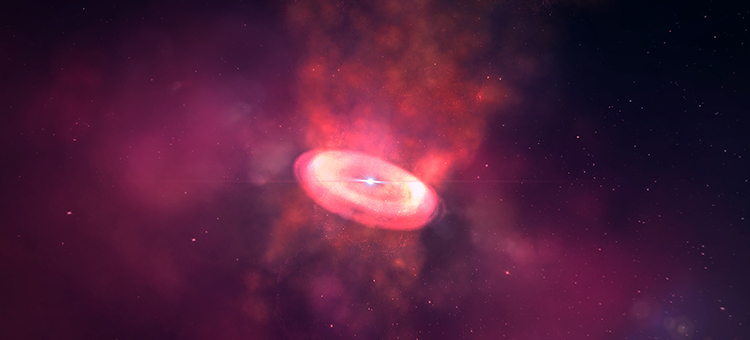Research using the large ALMA telescope in Chile has provided new insights into what happens when a star is formed.

Researchers at Chalmers University in Sweden have managed to get a clearer picture of a special kind of powerful wind swirling around a young star.
These winds carry away energy from the fast-spinning young star system. It allows the rotation to slow down so that the gas and dust get a chance to stick together, and allow the star to grow.
Until now, scientists thought that these winds occur somewhere in the middle of the disk of gas and dust that surrounds a young star. But the new observations show that it also seems to be formed further out of the disc.
“We can see that the rotating wind formed across the entire disc. Like a tornado, it lifts material up from the cloud of gas and dust. At some point the wind releases its hold on the cloud, so that the material floats freely. This has the effect that the rotation speed of the cloud is slowed and thus the new star can hold together. In the process, the material in the rotating disc of gas and dust accumulates and forms planets,” explains Jes Jørgensen, also at the Niels Bohr Institute and the Centre for Star and Planet Formation at the University of Copenhagen.
“The next thing we want to find out is whether the material released from the disc is completely blown away or whether it falls back onto the disc at some point and becomes part of the planet-forming system”, he says
References:
Per Bjerkeli et al. Resolved images of a protostellar outflow driven by an extended disk wind. Nature 15 December 2016. DOI: 10.1038 / nature20600
Newly formed star shoots out powerful whirlwind











![OpenAI. (2025). ChatGPT [Large language model]. https://chatgpt.com](https://www.illustratedcuriosity.com/files/media/55136/b1b0b614-5b72-486c-901d-ff244549d67a-350x260.webp)
![OpenAI. (2025). ChatGPT [Large language model]. https://chatgpt.com](https://www.illustratedcuriosity.com/files/media/55124/79bc18fa-f616-4951-856f-cc724ad5d497-350x260.webp)
![OpenAI. (2025). ChatGPT [Large language model]. https://chatgpt.com](https://www.illustratedcuriosity.com/files/media/55099/2638a982-b4de-4913-8a1c-1479df352bf3-350x260.webp)








